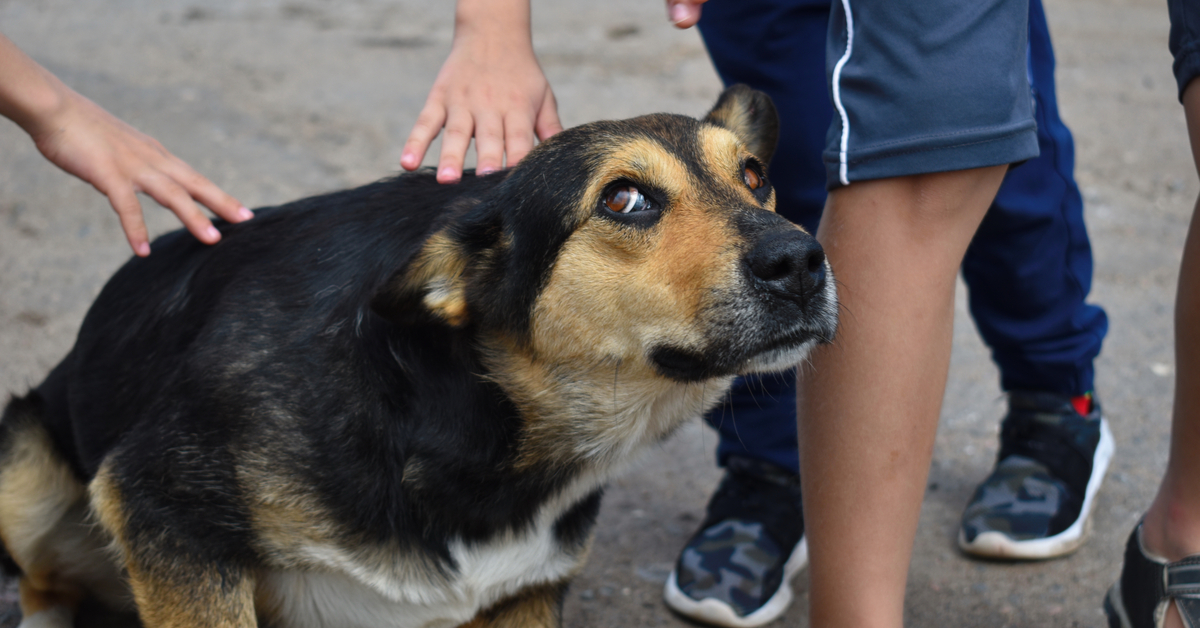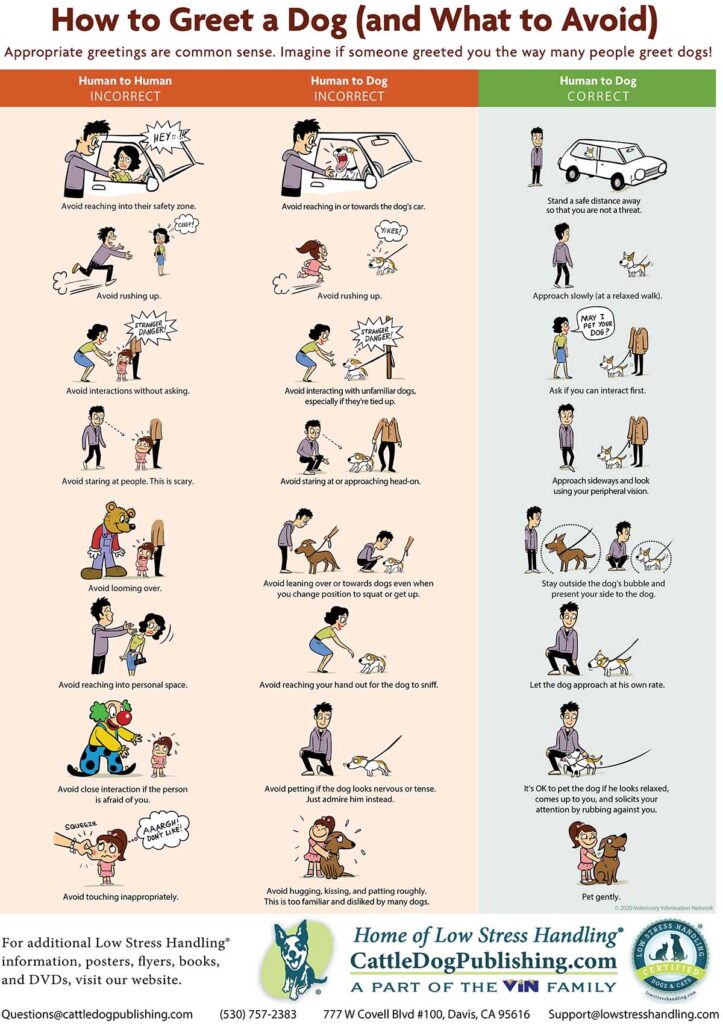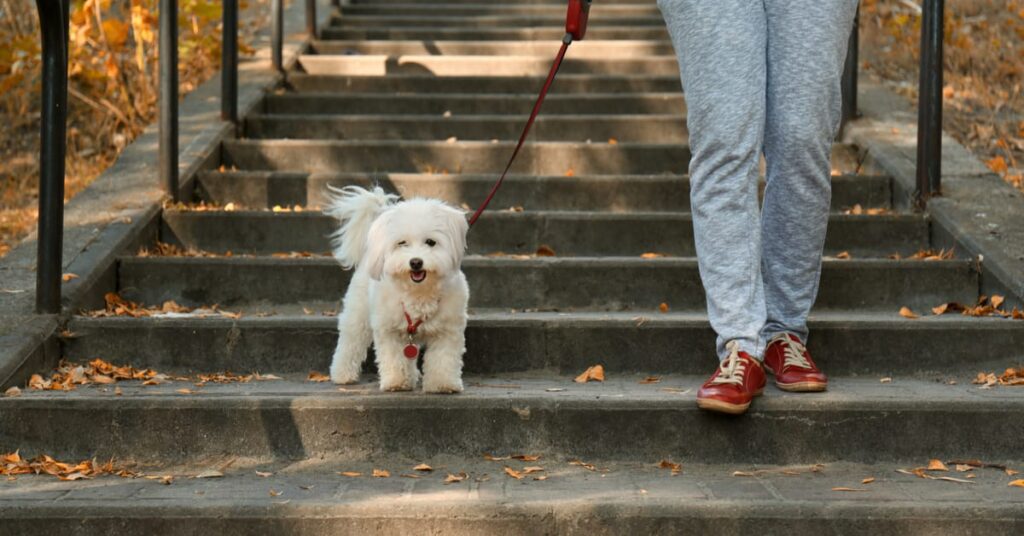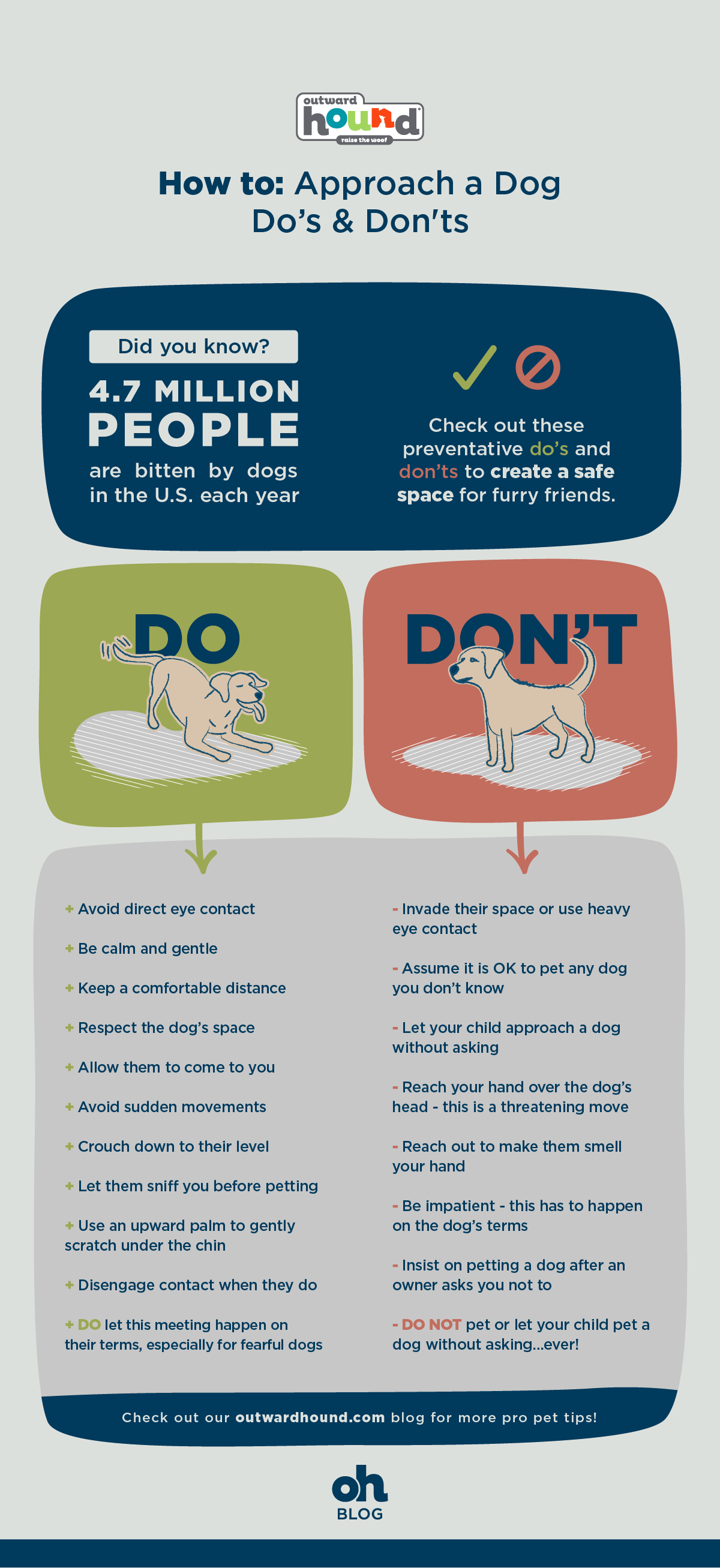How to Approach a Dog Do’s & Don’ts
How to approach a dog should be a skill known by all. It’s not something a lot of people take into consideration when greeting dogs.
It shouldn’t come as a surprise that many dogs don’t like being touched by strangers. Would you? That kind of negligence leads to dog bites or worse.
According to the American Veterinary Medical Association (AMVA), about 4.7 million people are bitten by dogs in the United States each year.
Dog bites are easily preventable if you take the time to understand their line of thinking when approached by strangers big and small.
Like us humans, pets value their personal space. All humans (including pet owners) need to know how to greet a dog. To get started, you need to know what the dog is telling you by their body language.
Reading the Dog’s Body Language

When greeting a new dog for the first time, it’s important to take in what their body language is saying. This will indicate the dog’s level of comfort in any given situation. Watch the dog’s face as well. Are they avoiding eye contact or making a “whale eye“? Then they are showing you they are uncomfortable.
Similarly, if the dog’s ears are pinned back, or they are licking their lips or yawning, this means they are stressed and want out of the situation.
Knowing how to approach a dog correctly is imperative for both human and pet safety.
For more information on how to interpret your dog’s physical signals, we have a comprehensive guide on how to read dog body language by professional dog trainer Sassafras Lowrey.

Do
Always ask the dog’s owner or their dog walker for permission to greet their dog before approaching and before petting an unfamiliar dog. It also helps to put yourself in their shoes … er … paws. Think about how you would like to be approached by a stranger (if at all!).
- Ask the owner’s permission
- Be calm and gentle
- Avoid direct eye contact
- Keep a comfortable distance and respect the dog’s space
- Let the dog approach you first and let the dog sniff you before petting. Avoid reaching out to make them smell your hand. Sudden movements are threatening to dogs.
- Crouch down and avoid hovering over the dog
- Stop when and if the dog is done with the interaction. This meeting needs to go on their own terms, especially if they are a fearful dog.
Parents, teach this to your children. It is critical for their safety.
It’s astounding how many times I have seen parents let their kids run up to strange dogs. A frightened dog in this situation could seriously hurt the child, then get blamed for it and labeled as an “aggressive dog” for acting on instinct. Even worse, the dog could get put down.
Resources for kids & parents
The AVMA has a great resource for parents and their kids that educates them on how (and if) they should approach a dog. They made a convenient printable coloring book that teaches them how to avoid dog bites and give dogs their space.
A fun graphic below about approaching dogs from animal behaviorist Dr. Sophia Yin is another great resource that helps family members learn the proper way to approach dogs. The Cattle Dog Publishing website has several useful tools for understanding dog behavior and meeting strangers.

Don’t
- Assume it is OK to pet any dog you don’t know. Or let your child do so.
- Reach your hand over the dog’s head. Instead use an upward palm to gently scratch under the chin after the dog approaches you and has sniffed the back of your hand. Reaching over the top of the head is a threatening move.
- Invade their space or use heavy eye contact
- Insist on petting a dog after an owner asks you not to.
- Be impatient. This has to happen on the dog’s terms.
- Pet a dog without asking…ever!
Proceed With Caution

Dogs don’t know that you have the best of intentions when you want to greet them. They don’t know what you mean when you say “It’s OK! I’m a dog person!” You can’t assume they do. How would you react if someone approached you and shoved a giant hornet in your face? Not OK, right? Would you feel any less terrified if they said, “It’s OK, he’s friendly!”
This is how many dogs feel when strangers reach their hands out to pet them. It’s scary and unknown.
Just like people, you never know if you might startle them or catch them on a day they are feeling grumpy, sick, or still in the socialization process with dog training. It is better to always let dogs “tell” you that they are comfortable with your interaction so you know you are correctly approaching the dog.
Follow Fido’s lead before trying to become best friends. Patience is the way.


